Potosi, one of the highest cities in the world at 4,090m, is located 3 hours south of Sucre and we have traveled through it many times on our trips around Bolivia. Even when traveling north to La Paz we have found ourselves staring through the window at the silhouette of Cerro Rico ('Rich Hill.') However, this time we got off the bus to explore...
Founded in 1545, the silver mined from Cerro Rico played a major role in funding the Spanish empire, so much so that the Spanish considered building a bridge back to Spain! Potosi became the largest and wealthiest city of the Americas
. Even today, something very lucrative is said to 'vale un Potosi' (be worth a Potosi.) After 1800 the silver mines were depleted, making zinc, lead and tin the main products. This eventually led to a slow economic decline which unfortunately is clear to see today as people struggle to make ends meet.
Nevertheless, the mountain continues to be mined for the precious silver vein and children as young as 14 years old work as miners. Each day approximately 3,000 tonnes of mineral are brought out of Cerro Rico by around 15,000 miners, working in over 500 separate mines. It is thought that there is up to 500km of tunnels within the mountain - this is evident by its symmetrical and discoloured appearance.
Cerro Rico is known as the 'mountain that eats men alive.' It is believed that up to 9 million people have lost their lives in the last 500 years. Today due to poor worker conditions, the miners have a short life expectancy with most of them contracting silicosis and dying around 40 years of age
.
In search of some silver, we set off on a 'mine tour' with our informative guide Rojar, who had worked in the mines until a serious head injury from a falling rock caused early retirement. We had a number of concerns about entering a place which had claimed the lives of so many and also felt uneasy about the voyeuristic factor in seeing other people's suffering whilst working in the most abysmal conditions imaginable.
Our first stop of the morning was the Miners' Market to pick up some gifts for the miners which included coca leaves, cigarettes, 96% alcohol (mainly for El Tio), fruit juice and dynamite. We would eventually offer these to the miners at work deep inside the mountain.
In full attire, we set off, avoiding the mineral trolleys, to find ourselves 1,000m inside Cerro Rico where it was pitch black..dusty..and hot! We scuttled up 20m through a small passage, crudely designed for Bolivian miners as opposed to English tourists, where at the top we met and had a (strong!) drink with some miners. Sam had a go at shoveling..for 30 seconds. Sophie had an uneasy feeling that she shouldn't participate and was later told that women working in the mines brings bad luck. At least we were near the exit by this point where we were introduced to 'El Tio,' a large papier-mache devil with full erection (!) who is worshiped by the miners in the form of frequent offerings to keep them safe and bring them good fortune.
Glad to be out of Cerro Rico, we set off in search of the curative powers of Tarapaya hot springs where we enjoyed floating around this warm volcanic lagoon. We later found out from Rojar that the roped out sections of the lake which we had paid no attention to were there for a reason. Sam thought it was the 'Slow Lane!' Apparently the volcanic energy gives rise to sudden vortices that can be very dangerous! Maybe the offerings to El Tio had worked for us...
After an energetic swim we enjoyed a meat fondue in La Casona Pub.
We had appreciated Rojar's guiding so much that the following day we went for a trek in the mountains surrounding Potosi. Here we visited the Lagunas de Kari Kari - artificial lakes constructed in the 16th century by indigenous slaves to provide water for the city. Before passing by an indigenous house, Rojar treated us to some traditional windpipe music. When we reached the summit, more offerings of alcohol and coca leaves were made to Pachamama ('Mother Earth.')
Exhausted and with a badly sunburned head (Sam - soon to be 'Frosty the Snowman'), we returned to Sucre - 3 hours...
El Cerro Rico
Thursday, December 12, 2013
 Potosi, Bolivia
Potosi, Bolivia
Other Entries
-
1Bienvenido a Quito
Sep 3073 days prior Quito, Ecuadorphoto_camera7videocam 0comment 0
Quito, Ecuadorphoto_camera7videocam 0comment 0 -
2Banos, the city with a lot of (hot) water
Oct 0370 days prior Baños, Ecuadorphoto_camera4videocam 0comment 0
Baños, Ecuadorphoto_camera4videocam 0comment 0 -
3The colonial jewel of the south...
Oct 0568 days prior Cuenca, Ecuadorphoto_camera6videocam 0comment 1
Cuenca, Ecuadorphoto_camera6videocam 0comment 1 -
4Arriving in Peru with a bang!
Oct 0766 days prior Mancora, Peruphoto_camera6videocam 0comment 0
Mancora, Peruphoto_camera6videocam 0comment 0 -
5Mud walls and hairless dogs...
Oct 0964 days prior Trujillo, Peruphoto_camera8videocam 0comment 0
Trujillo, Peruphoto_camera8videocam 0comment 0 -
6Living Lima...
Oct 1162 days prior Lima, Peruphoto_camera10videocam 0comment 0
Lima, Peruphoto_camera10videocam 0comment 0 -
7A couple of nights on the Sours...
Oct 1360 days prior Pisco, Peruphoto_camera12videocam 0comment 0
Pisco, Peruphoto_camera12videocam 0comment 0 -
8Mysteries in the sand...
Oct 1558 days prior Nasca, Peruphoto_camera11videocam 0comment 0
Nasca, Peruphoto_camera11videocam 0comment 0 -
9Inca-ing it up...
Oct 1756 days prior Cusco, Peruphoto_camera15videocam 0comment 1
Cusco, Peruphoto_camera15videocam 0comment 1 -
10The Inca Trail to Machu Picchu...
Oct 2053 days prior Machu Picchu, Peruphoto_camera16videocam 0comment 0
Machu Picchu, Peruphoto_camera16videocam 0comment 0 -
11El Cañón del Colca
Oct 2746 days prior Arequipa, Peruphoto_camera15videocam 0comment 0
Arequipa, Peruphoto_camera15videocam 0comment 0 -
12The wonders of the totora reed...
Oct 3043 days prior Puno, Peruphoto_camera13videocam 0comment 0
Puno, Peruphoto_camera13videocam 0comment 0 -
13Ahora aprendemos espanol...
Nov 0339 days prior Sucre, Boliviaphoto_camera22videocam 0comment 0
Sucre, Boliviaphoto_camera22videocam 0comment 0 -
14Bolivia's salty jewel...
Nov 2517 days prior Uyuni, Boliviaphoto_camera25videocam 0comment 1
Uyuni, Boliviaphoto_camera25videocam 0comment 1 -
15Being like Butch Cassidy...
Nov 2913 days prior Tupiza, Boliviaphoto_camera13videocam 0comment 0
Tupiza, Boliviaphoto_camera13videocam 0comment 0 -
16Tarabuco Market
Dec 0111 days prior Sucre, Boliviaphoto_camera12videocam 0comment 0
Sucre, Boliviaphoto_camera12videocam 0comment 0 -
17El Cerro Rico
Dec 12 Potosi, Boliviaphoto_camera14videocam 0comment 0
Potosi, Boliviaphoto_camera14videocam 0comment 0 -
18Club Universitario v Nacional Potosi
Dec 153 days later Sucre, Boliviaphoto_camera5videocam 0comment 0
Sucre, Boliviaphoto_camera5videocam 0comment 0 -
19The home of 'fine' Bolivian wine...
Dec 208 days later Tarija, Boliviaphoto_camera15videocam 0comment 1
Tarija, Boliviaphoto_camera15videocam 0comment 1 -
20Feliz Navidad!
Dec 2412 days later Sucre, Boliviaphoto_camera7videocam 0comment 0
Sucre, Boliviaphoto_camera7videocam 0comment 0 -
21La Paz, 'The City of 3 Ps...'
Dec 2614 days later La Paz, Boliviaphoto_camera19videocam 0comment 0
La Paz, Boliviaphoto_camera19videocam 0comment 0 -
22A belated white Christmas...
Dec 2816 days later Condoriri, Boliviaphoto_camera15videocam 0comment 1
Condoriri, Boliviaphoto_camera15videocam 0comment 1 -
23Isla del Sol
Jan 0221 days later Copacabana, Boliviaphoto_camera16videocam 0comment 0
Copacabana, Boliviaphoto_camera16videocam 0comment 0 -
24The World's Most Dangerous Road
Jan 0726 days later Coroico, Boliviaphoto_camera10videocam 0comment 0
Coroico, Boliviaphoto_camera10videocam 0comment 0 -
25La Ciudad Blanca...
Jan 1231 days later Sucre, Boliviaphoto_camera13videocam 0comment 0
Sucre, Boliviaphoto_camera13videocam 0comment 0 -
26Busy, buzzy Cochabamba...
Jan 3150 days later Cochabamba, Boliviaphoto_camera5videocam 0comment 0
Cochabamba, Boliviaphoto_camera5videocam 0comment 0 -
27¡Adiós Sucre!
Feb 0252 days later Sucre, Boliviaphoto_camera6videocam 0comment 1
Sucre, Boliviaphoto_camera6videocam 0comment 1 -
28Bienvenido a Chile!
Feb 1666 days later Arica, Chilephoto_camera13videocam 0comment 0
Arica, Chilephoto_camera13videocam 0comment 0 -
29Ghost towns and piscolas...
Feb 1969 days later Iquique, Chilephoto_camera16videocam 0comment 0
Iquique, Chilephoto_camera16videocam 0comment 0 -
30Into the Desert...
Feb 2272 days later San Pedro de Atacama, Chilephoto_camera13videocam 0comment 0
San Pedro de Atacama, Chilephoto_camera13videocam 0comment 0 -
31Birthday piscos...
Feb 2575 days later La Serena, Chilephoto_camera11videocam 0comment 1
La Serena, Chilephoto_camera11videocam 0comment 1 -
32Chile's capital...
Feb 2878 days later Santiago, Chilephoto_camera11videocam 0comment 1
Santiago, Chilephoto_camera11videocam 0comment 1 -
33'Valpo'
Mar 0381 days later Valparaiso, Chilephoto_camera14videocam 0comment 0
Valparaiso, Chilephoto_camera14videocam 0comment 0 -
34The Maule Valley
Mar 0583 days later Talca, Chilephoto_camera4videocam 0comment 1
Talca, Chilephoto_camera4videocam 0comment 1 -
35The Chilean Lakes District...
Mar 0785 days later Pucon, Chilephoto_camera10videocam 0comment 0
Pucon, Chilephoto_camera10videocam 0comment 0

 Potosi, Bolivia
Potosi, Bolivia





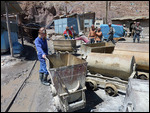

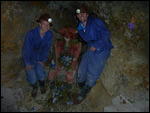
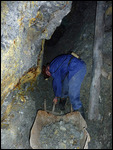
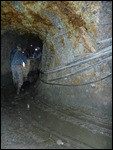
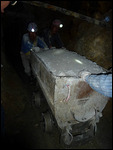
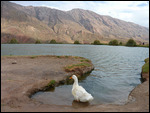
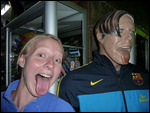
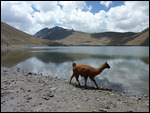
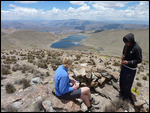
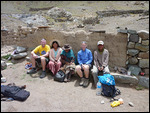
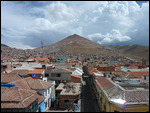
2025-05-23